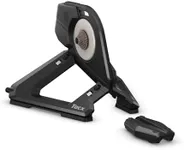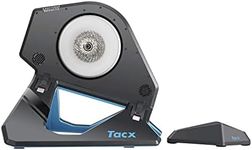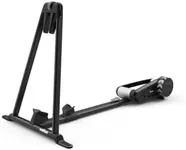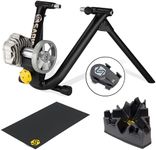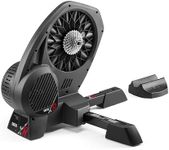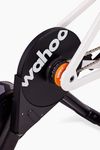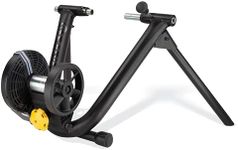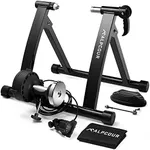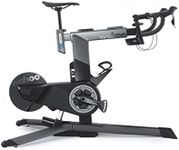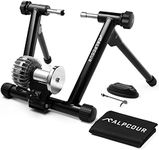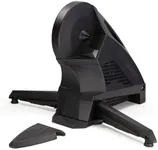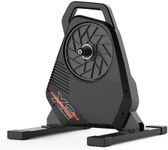Buying Guide for the Best Zwift Smart Trainer
Choosing the right Zwift smart trainer can significantly enhance your indoor cycling experience. A smart trainer connects to your bike and simulates real-world cycling conditions, making your workouts more engaging and effective. When selecting a smart trainer, it's important to consider several key specifications to ensure it meets your needs and preferences. Understanding these specs will help you make an informed decision and get the most out of your investment.Resistance TypeResistance type refers to how the trainer creates resistance to simulate different cycling conditions. There are two main types: magnetic and fluid. Magnetic trainers use magnets to create resistance, which can be adjusted manually or electronically. Fluid trainers use a hydraulic fluid to create resistance that increases with your speed. Magnetic trainers are generally more affordable and offer consistent resistance, while fluid trainers provide a more realistic road feel and smoother resistance changes. Choose magnetic if you prefer a straightforward, reliable option, and fluid if you want a more lifelike cycling experience.
ConnectivityConnectivity is about how the smart trainer communicates with your devices, such as your computer, tablet, or smartphone. Most smart trainers use Bluetooth and ANT+ protocols to connect to apps like Zwift. Good connectivity ensures that your trainer can easily sync with your devices and provide real-time data on your performance. Look for trainers with both Bluetooth and ANT+ to ensure compatibility with a wide range of devices and apps. If you plan to use multiple devices or apps simultaneously, having dual connectivity is essential.
Power AccuracyPower accuracy measures how precisely the trainer can measure your power output, usually expressed as a percentage. High power accuracy is crucial for serious training, as it ensures that the data you see on your screen reflects your actual effort. Trainers typically offer power accuracy within a range of +/- 1% to +/- 5%. For competitive cyclists or those following structured training plans, a trainer with higher power accuracy (closer to +/- 1%) is ideal. Casual riders may find that a lower accuracy range is sufficient for their needs.
Maximum ResistanceMaximum resistance indicates the highest level of resistance the trainer can provide, usually measured in watts. This is important for simulating steep climbs and intense sprints. Trainers can offer maximum resistance levels ranging from around 1,000 watts to over 2,000 watts. If you are a powerful rider or enjoy high-intensity workouts, look for a trainer with a higher maximum resistance. For beginners or those focusing on endurance rather than power, a lower maximum resistance may be adequate.
Noise LevelNoise level refers to how much sound the trainer produces during use. This is an important consideration if you live in an apartment, have roommates, or prefer a quieter workout environment. Trainers can vary significantly in noise levels, with some being almost silent and others producing noticeable noise. Direct-drive trainers tend to be quieter than wheel-on trainers. If noise is a concern, look for trainers specifically marketed as quiet or silent. Reading user reviews can also provide insights into the actual noise levels experienced by other users.
CompatibilityCompatibility refers to whether the trainer can accommodate your bike's specifications, such as wheel size, axle type, and drivetrain. Ensuring compatibility is crucial for a seamless setup and optimal performance. Most trainers are compatible with a wide range of bikes, but it's important to check the specific requirements. If you have a road bike, mountain bike, or a bike with unique specifications, verify that the trainer can accommodate it. Some trainers come with adapters or additional accessories to enhance compatibility.
